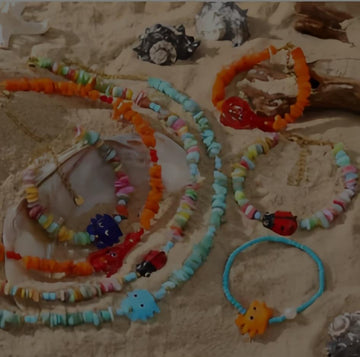Prevent scratches and collisions during daily storage
Store separately: Stone bracelets are relatively fragile in texture. Contact with items of different hardness or rough surface may cause scratches or collision damage. A soft and independent storage box or jewelry bag should be prepared to place the stone bracelet separately in it. For instance, do not store it together with metal items such as keys and coins. The surface of metal items may have burrs or sharp corners, and it is very easy to scratch the surface of the stone bracelet during shaking. At the same time, avoid stacking with other gemstone jewelry. Different gemstones have different hardness levels, and mutual friction may cause scratches on the surface of gemstones with lower hardness.
Filling protection: In storage boxes or jewelry bags, you can put some soft fillers, such as silk, flannel, etc. Placing the stone bracelet among these fillers can serve as a buffer and fix, reducing the possibility of the bracelet shaking and colliding inside the box. Just as foam, sponge and other filling materials are used to protect fragile items when transporting them, soft fillers can provide a relatively stable and safe environment for stone bracelets.
It is scratch-resistant and shock-proof during wearing
Avoid contact with hard objects: When wearing a stone bracelet, try to avoid contact with hard objects. For example, when doing housework, exercising or engaging in some physical labor, it is best to take off the bracelet. When doing housework, one may come into contact with various hard utensils such as POTS, pans, and cleaning tools. If one accidentally bumps into a stone bracelet, it may cause scratches or cracks on its surface. During exercise, the swinging and collision of the body can also increase the risk of damage to the bracelet.
Pay attention to the range of motion: In daily activities, it is important to control the range of motion. For instance, when reaching for something or putting on or taking off clothes, the movements should be gentle and slow to avoid excessive force that could cause the bracelet to collide with surrounding objects. Imagine that if you reach for something high up quickly, the bracelet might hit hard objects such as the wall or the corner of the table, thus causing damage.
Stay away from chemicals: Some chemicals may cause corrosion or damage to the surface of stone bracelets, making them more prone to scratches. For instance, when in contact with chemicals such as cosmetics, perfumes and detergents, it is best to remove the stone bracelet first. These chemical substances may seep into the crevices of the stone bracelet, altering its surface luster and texture, making it rough and more prone to scratches.
Regular cleaning and maintenance to prevent scratches
Gentle cleaning: Regular cleaning of stone bracelets can maintain their surface luster and smoothness, reducing the possibility of scratches. When cleaning, mild detergent and soft cloth should be used. You can soak the stone bracelet in warm water, add a small amount of neutral detergent, and then gently wipe the surface with a soft cloth. Avoid using rough brushes or hard objects to scratch the bracelet to prevent the surface from being scratched. Just like cleaning glasses, use a soft glasses cloth to wipe gently instead of rough tissues or cloth.
Professional maintenance: If a stone bracelet has been worn for a long time and some stubborn stains or minor scratches appear on its surface, it is advisable to send it to a professional jewelry store for maintenance. Professional jewelers can use specialized tools and techniques to polish, grind and other treatments on bracelets, restoring their surface luster and smoothness. However, it is important to choose a reputable jewelry store to ensure that the maintenance process does not cause further damage to the bracelet.







